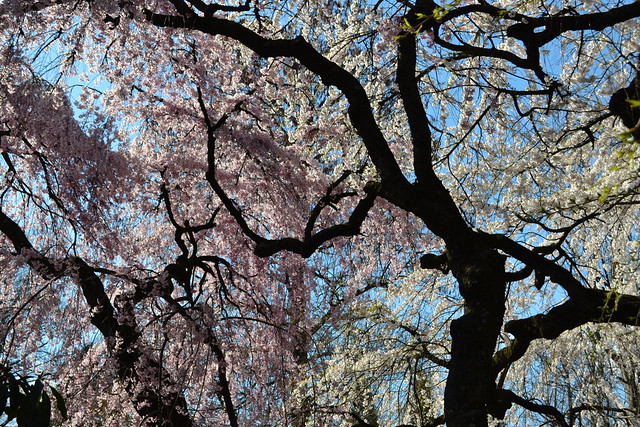
| 
| | Photo by Elizabeth Peters | Children’s Garden from Home
Spring Trees
Hello Children’s Garden Families,
It’s Emily, back with some more BBG-inspired fun and learning for our time indoors. I hope that everyone has started to explore some of the first signs of spring. I have been watching a tree from my balcony as its leaves grow larger and greener each day. | |
|
| | | | Illustration by Ellen McCarthy |
|
Let’s Explore: Street Trees
(Ages 5–13, 30–45 minutes)
NYC Parks has mapped out thousands of street trees all over the city. Use this map to identify the trees on your street. You can even adopt a local street tree, and take charge of keeping it tended and watered all season.
Materials:
Garden journal, pen or pencil, sidewalk chalk
Print or draw a map of your street in your journal, making note of your house and other landmarks. If you didn’t make a journal with us last week, plain paper is just fine. Enter your home address into the Street Tree Map, and draw and label the names of some of your favorite trees on your street. While you work, take note of a few fun facts about each of the trees you choose.
The next time you can take a neighborhood walk, bring your map and a few pieces of sidewalk chalk. Use your chalk to leave a note on the sidewalk by each tree with the name of the tree and its special feature. This will delight your neighbors as they try to guess who the secret nature admirer is!
For example,
Honey locust tree: “Urban tough! Doesn't mind heat, pollution, or drought.”
Silver linden “Make tea from these fragrant spring flowers.”
Sweet gum: “Star-shaped leaves and prickly seeds” or “People used to chew my gummy sap like chewing gum.”
London plane tree: “Shedding bark helps get rid of harmful insects.” | |
|
Let's Investigate: Phenology
(Ages 10–13 or younger, with help from parents, 20+ minutes) |
|
Materials:
Computer with internet access, binoculars (not required)
Many botanists and citizen scientists study phenology—the study of cyclic and seasonal natural phenomena in plants, animals, and the earth’s climate. These scientists track signs of spring to record the dates of plants forming buds, growing leaves, and flowering. After collecting data for many years, they can explore how seasons are shifting due to climate change.
Project Budburst is a national citizen scientist project that you can join to become a phenology scientist too! If you can see a tree from your window, that’s all you need to participate. Follow the link to the project and help collect data that will be used for years to come to track the seasonal changes we are seeing here in NYC.
Note: Younger students can download this tree journal page to practice collecting data about a favorite tree. | |
|
| Photos by Ellen McCarthy | Let’s Create: Paper Bag Bonsai Trees
(Ages 4–10, 20-30 minutes)
Materials:
1 paper lunch bag, colored paper for leaves, white glue. Optional: small box lid, ½ cup of small stones, sticks, or wood chips.
We often make these paper bag bonsai trees with kids on summer afternoons. These instructions will help you make the basic form of your tree. If you have a small box lid (the lid of a stationery box works well) and a handful of gravel or small sticks, glue the base of your tree into the box top and glue the sticks or rocks around the base of the tree to anchor it into place.
Older students can read more about the different styles of bonsai, then twist and mold their paper tree to match their favorite style. | |
|
We would love to see what you’ve been up to! Please feel free to email me any photos, stories, or questions you might have while working through these projects. It would be nice to stay connected with you all during our time apart.
Until next time,
Emily |
|
Copyright © 2020
Privacy Policy | Contact Us
BROOKLYN BOTANIC GARDEN
1000 Washington Avenue
Brooklyn, NY 11225
718-623-7200
bbg.org |
|
| | |